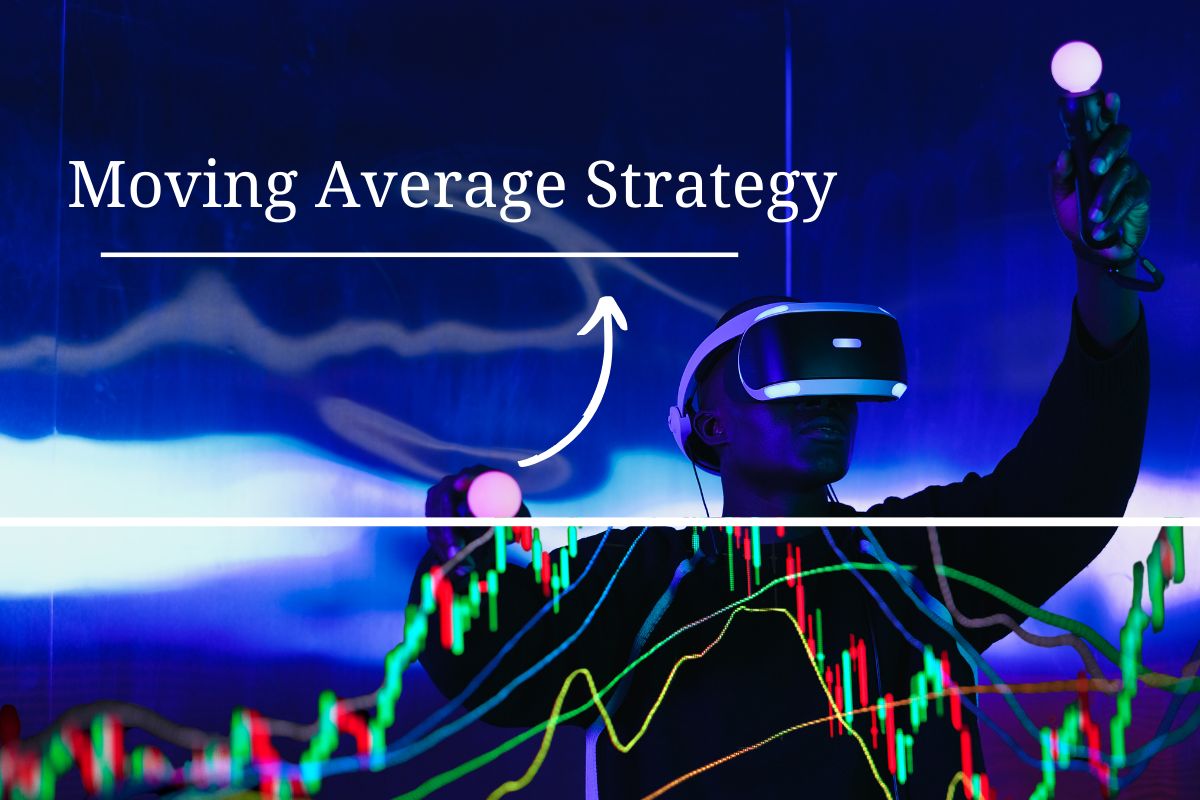Understanding the trend is one of the most essential things in the forex market.
If you cannot identify the trend, you will never be able to take quality trades.
When trading in the forex market, it’s essential to understand which trend the market is currently following:
Is it an uptrend, a downtrend, or a ranging market?
Identifying the trend can be difficult for new traders, and many become confused about it.
But don’t worry—there’s a popular tool that helps identify the trend very easily: the Moving Average.
What is the Moving Average?
Moving Average (MA) is a technical indicator that calculates the average price of a certain number of candlesticks to determine the market trend. It primarily helps predict the direction in which the market is moving.
If the price stays above the moving Average, it’s assumed the market will move up;
The market will likely drop if the price is below the moving Average.
Types of Moving Averages
- Simple Moving Average (SMA)
Calculates the average price of a set number of recent candlesticks.
Example: 20 SMA means the average price of the last 20 candles.
- Exponential Moving Average (EMA)
Gives more weight to recent candlesticks and reacts faster than SMA.
EMA is more popular among traders because of its fast response to price changes.
Which Timeframe Should You Use?
| Timeframe | Trade Type |
|---|---|
| M5–M15 | Scalping |
| H1–H4 | Day Trading |
| D1 or Weekly | Swing Trading |
How to Identify a Trend Using Moving Average?
Step 1: Go to the chart and apply the Moving Average
Use MT4, MT5, or TradingView to apply the moving Average.
Then go to the indicator list and select “Moving Average.”
Example:
In the H4 timeframe of EURUSD, if you see:
- Price has closed above the 24 EMA
- The 9 EMA has crossed above the 21 EMA
- A bullish candlestick has formed
→ Then you can consider taking a buy entry.
Best EMA Settings for Beginners:
| Timeframe | EMA Settings | Use For |
|---|---|---|
| M15 | 10 EMA + 21 EMA | Scalping |
| H1 | 20 EMA + 50 EMA | Day Trading |
| D1 | 50 EMA + 200 EMA | Long Term |
Moving Average দিয়ে স্ট্র্যাটেজি (Entry Rule):
🔹 Buy Setup:
- 9 EMA crosses above 21 EMA
- The price is above both EMAs
- Bullish candle closes
✅ Entry: Must Bullish candle close
✅ SL: Last Swing Low
✅ TP: 1:2 or next resistance
🔹 Sell Setup:
- 9 EMA crosses below 21 EMA
- The price is below both EMAs
- Bearish candle confirms
✅ Entry: Bearish candle close
✅ SL: Last Swing High
✅ TP: Next support level
EMA vs SMA – Which One is Better?
| Feature | EMA | SMA |
|---|---|---|
| Response Time | Fast | Slow |
| Trend Detection Ability | Better | Relatively Lower |
| Ease of Use | Easy | Easy |
How to Add a Custom Moving Average in TradingView?
Go to the Indicators tab → type and search for “Moving Average Exponential”.
Then change the Length to 9, 21, 50, 100, 200, etc.
Customize the color and line style, and your moving average will be successfully added.
Common Mistakes Traders Make:
Taking trades just by looking at the EMA leads to a loss
Entering trades without any confirmation
Using the same EMA settings on all timeframes without understanding them, which causes poor trade outcomes
Remember:
The Moving Average is just a guideline, but before taking any trade, always confirm it using other tools like Support/Resistance, RSI, and Candlestick patterns.
Doing so dramatically reduces the chances of losing trades.
Final Words
With the help of the Moving Average, you can easily identify market trends.
Moving Average is one of the most important aspects of forex trading.
If you analyse charts regularly and learn how to use the moving Average properly, trading will become much easier, and your trading success rate will increase significantly.


